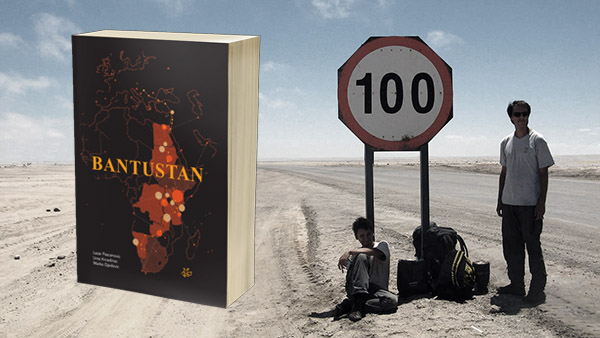In the southern part of Iran, in Chaharmahal and Bakhtiyari districts (Persian: Ostān-e Chahār-Mahāl-o Bakhtiyārī), lives a very special and little known community of people. They used to count over 500,000 and millions of animals – but nowadays there is about 200,000 people that still live the ancient way of life together with their livestock.
They are the Bakhtiyari people – the nomads of Iran.
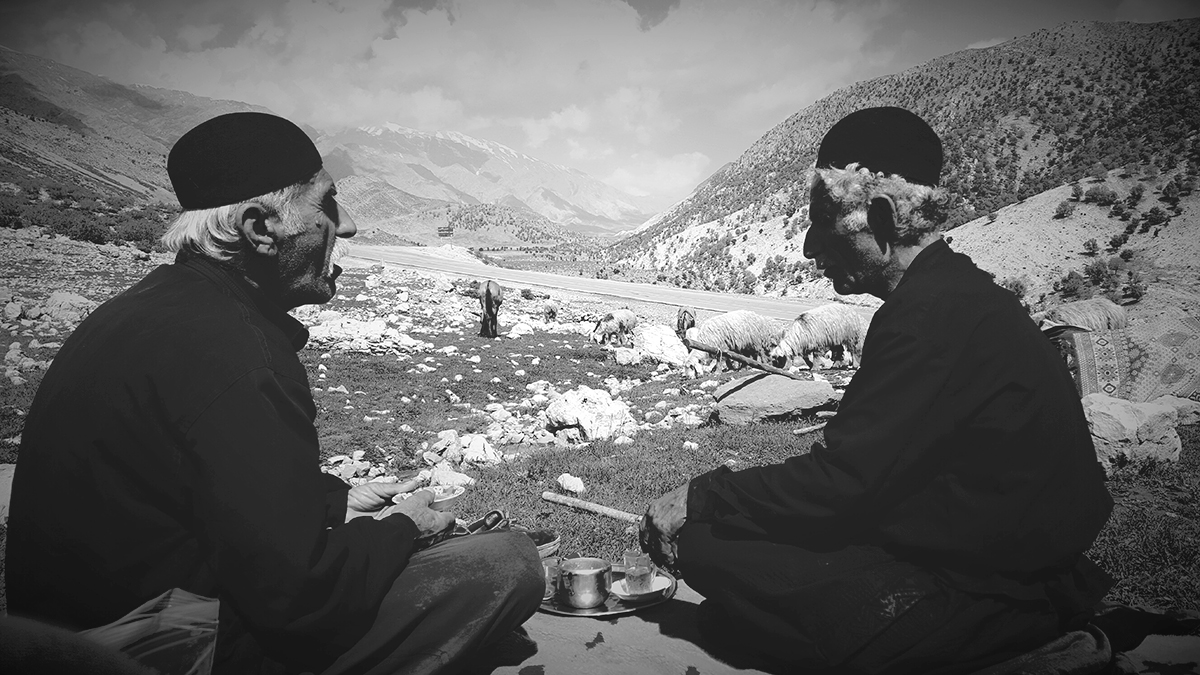
In the spring of 2018, in another semi-annual migration (Lori dialect: ‘kooch’), me and a few other friends went on a journey to Zagros hinterlands, in search of this obscure culture. Having in mind that a 300 km long migration – which they undertake going from winter pastures (‘garmsir’), to summer pastures (‘yehlagh’) high in the mountains – can last as long as two months, at first it was a bit challenging to locate our nomad hosts, especially in a vast region like Zagros mountain range. But soon we stumbled upon another nomadic family that hosted us for the first night.
The first encounter with the members of this particular family was exciting for both parties – them, the children of Zagros, and us, lost in the wilderness. With welcoming smile on her face, the mother (Persian: ‘madar’) of the family said: “Well, we need to be here, but what on Earth are you doing here!?”. Nobody replied, but I remember that I thought of what could be the only possible reply – we came to remember the things we forgot long ago. Standing barefoot in front of a primitive tent (Persian: ‘chador’), dressed fully in black clothes, this middle-aged woman that looked older than her age appeared very simple, yet very tough with a face that could almost tell stories. It was obvious she’s a very strong woman – a pillar of the family. The men – father and two younger family members – were also close by, shepherding and guarding the sheep and goats.
After the men came to greet us, realizing that the family we were looking for was related to them, they invited us to settle for a night in their camp, placed in a cozy valley. It was already getting dark, so we set up our tents and had dinner with these welcoming people. Since we were too many and came unannounced, the dinner they prepared was humble, but they insisted to share it with us. Still, with a bit of improvisation, no one was left hungry. Soon afterwards, everybody retreated to their tents, to catch a bit of sleep.
After a rainy night, in the morning luckily the sun was coming up. Me and few others joined our guide Mohammad in search of our hosts – the Ali Mowlah’s family. Soon, with a little help of Mohammad’s intuition, we found their camp not too far away. It was in a rocky slope, placed between two cold creeks. They shared the spot with another nomadic family. Both had a big flock of goats and sheep that could roam freely, but in spite of that they would always recognize an animal not belonging to them, in case it drifted from another flock. The Bakhtiyari know their animals. The respect and solidarity between families is unquestionable.
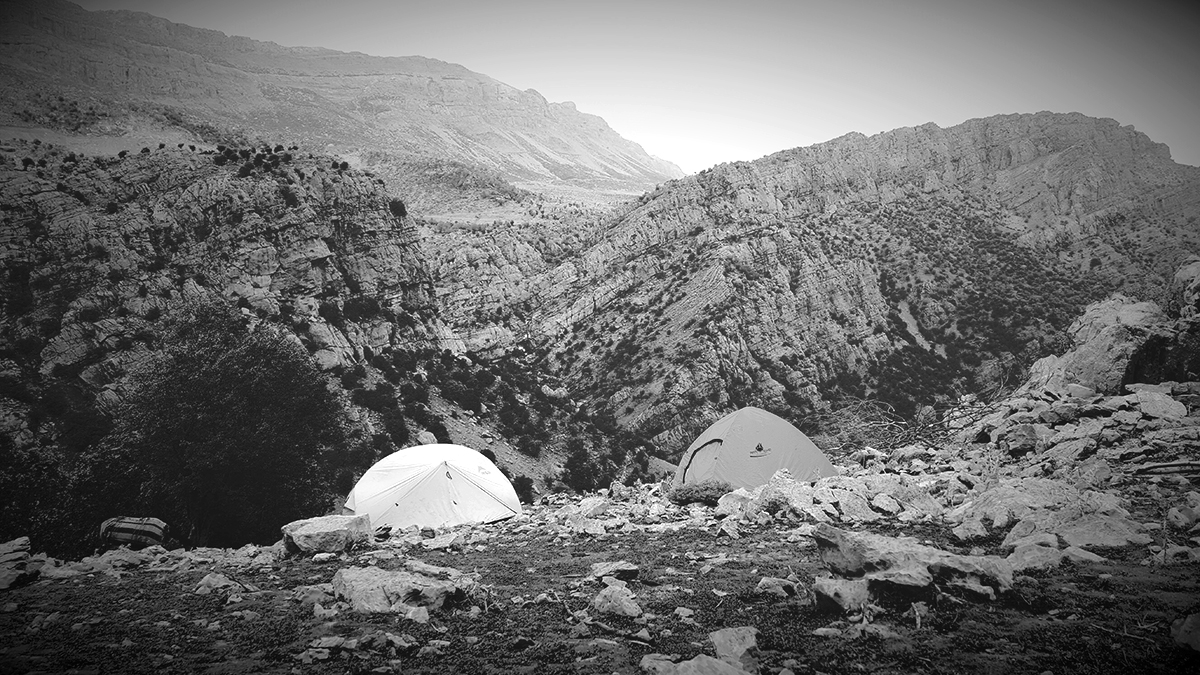
During the rest of the day we met all of the members, both of our host family and the neighboring family as well. There we saw a newly married couple, Behrooz and his wife. Behrooz was 21 and his wife was 19. This young lady was a true example of natural and untamed beauty. She clearly did not care much about the impression, yet still she managed to appear so elegant. Later I will saw her again, proudly riding a horse into the wild. It is a pity they don’t allow taking photos of female family members, especially the younger ones. It was only two weeks that they had been married, and yet they already joined the family for the migration. While Behrooz left to shepherd the herds, the bride was at the camp, helping with cooking and other daily tasks. She was wearing a nice colorful dress, unlike madar from the first camp. They explained that if it happens that a female suffers a loss of her companion, or even a very close relative, from then on she will dress only in black. It is a traditional way of mourning.
As I arrived earlier, and was waiting for the rest of our group to join us, I had the privilege of enjoying a peaceful nomadic afternoon in their camp. The donkeys and horses resting in the shades of big oak trees, together with a stunning view over a picturesque Zagros scenery, made it all look quite idyllic. There was one tent reserved only for men, and a little baby goat that had been born just that morning. I was looking after the baby goat, and a bit later, the elderly – among which Ali Mowlah himself – joined me as well.
It was a rather pleasant experience to chat with the men over tea. Being very hospitable, they offered me the first cup of their well known black tea. Since they do not carry many assets on the migration, we shared the only two cups they had, one at the time. While sipping the tea, they were speaking about current and past times, before the revolution of 1979, remembering the great Jaffar Qoli – the main protagonist of the ethnographical documentary People of the Wind – as one of the last chiefs (Lori: ‘kalantar’) of the Bakhtiyari. The last kalantar – because the government was not always a great fan of them. It was shortly after the first oil exploitations in Persian gulf, conducted by the Brits in this nomad region during early 20th century, that distrust took place. Because of their growing independence and even political significance, it was Shah Reza himself who tried to patronize the Bakhtiyari. He forced them to settle, so he alone could control this fast emerging business – with little success. Despite the sacrifices, the Bakhtiyari did reclaim and restore their freedom, tear down their houses, and once again were free to go back to the Zagros.
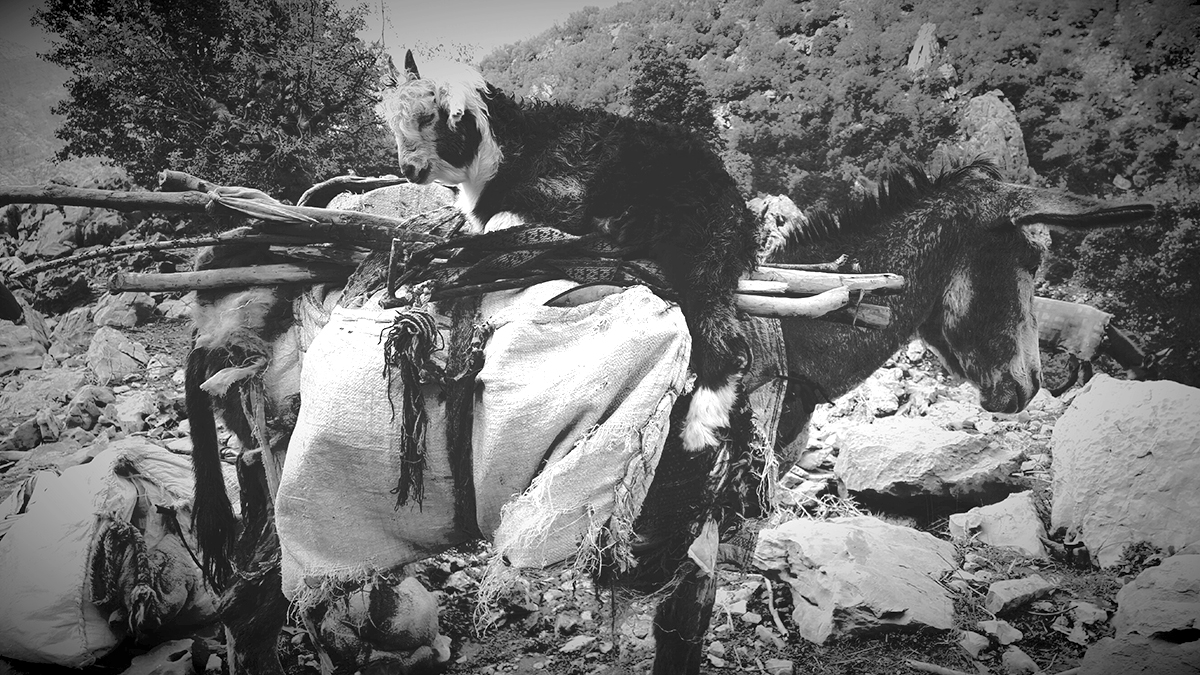
I was surprised to find out that Ali Mowlah – the father of our host family – is actually related to Jaffar. He also said that he actually remembered the crew and the shooting of the film! Being an old and respected member of the Bakhtiyari tribe, Ali proved himself to be a man of great experience and hospitality. He had many questions for me too, and with the help of Elham from our group, who could speak Farsi, we could communicate and exchange some cultural information. I remember him asking me whether we had nomads back in Europe. Not wanting to discourage him, or to disappoint these fine men, I replied that we had many shepherds, still roaming in the mountains – which proved to be a satisfactory answer.
A bit later we met the mother and her shy daughters, Sumaye and her younger sister whose name I forgot. They were in the camp, preparing food and the daily bread. The older daughter, Sumaye, was married, but her husband was in the city due to some business. As Bakhtiyari families can be quite big, they sometimes share the burden of the migration, so that the other members can take care of things of equal importance. The boys, who are usually in charge of shepherding, joined us a bit later. Sa’adik as the eldest son (21), Sa’adat, and Peyman as the youngest one, were the three boys who joined to help the family on the migration.
Sa’adik, although hard-working, was the lucky one to get the education, while his younger brothers, as well as his sisters, skipped school. He had even earned a bachelor degree at a university in Ahwaz, and is shyly learning English as well. Although tempted by the modern way of life, it is amazing and a rather encouraging fact that he still supports his family on the migration.
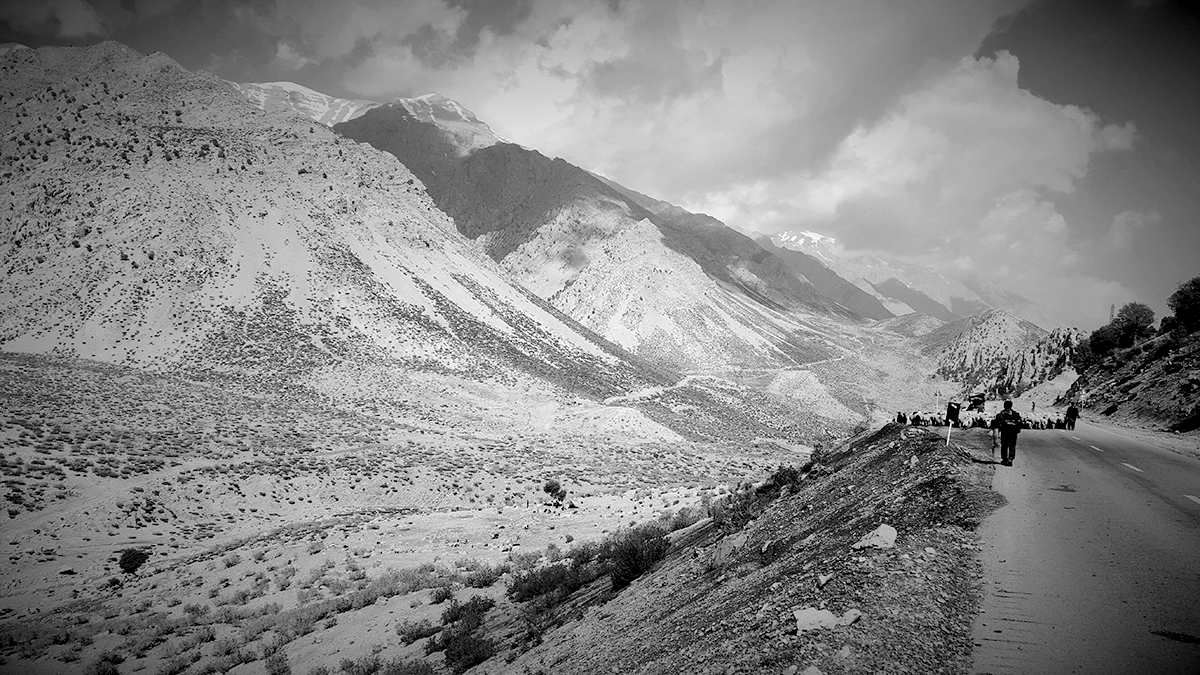
Due to the rain and very unpredictable weather, the family had been waiting in the camp for four days. Rain makes it hard for the animals to migrate long distances, so they usually stay put. But one day after we came the rain finally stopped, so they decided to move. After they packed their big tent and loaded the donkeys and the mules, we packed our stuff as well, and joined the caravan. We went uphill, following paths only nomads can recognize. When reached more flat terrain, they decided to camp there over night and wait for better weather. We had lunch and, while resting, had some time to learn more about this family and their culture.
The family also included three older men who stayed back in the city of Lali, in the neighboring Khuzestan province. They, as well as the two older daughters who were married and settled down, didn’t join the migration for different reasons. I found out that one of them had had a baby to take care of, and since she was married to a settler, she no longer participated in the migration. I was told that, in the past, even pregnant girls used to migrate with the family and give birth to their babies, giving them names of the mountains on which they were born.
As for the girls, they are attached to the family and their mother, at least until they get married. They work as hard as the boys, if not harder. From early morning they are responsible for milking, preparing food, yogurt and the traditional dairy drink (Persian: ‘doogh’), as well as taking care of the camp. At one point it suddenly started to rain so I helped them set up a big and heavy tent in just a few minutes. They rarely go to school, but there are some exceptions. I heard from another young nomad that his older sister had studied in the city and spoke good English.
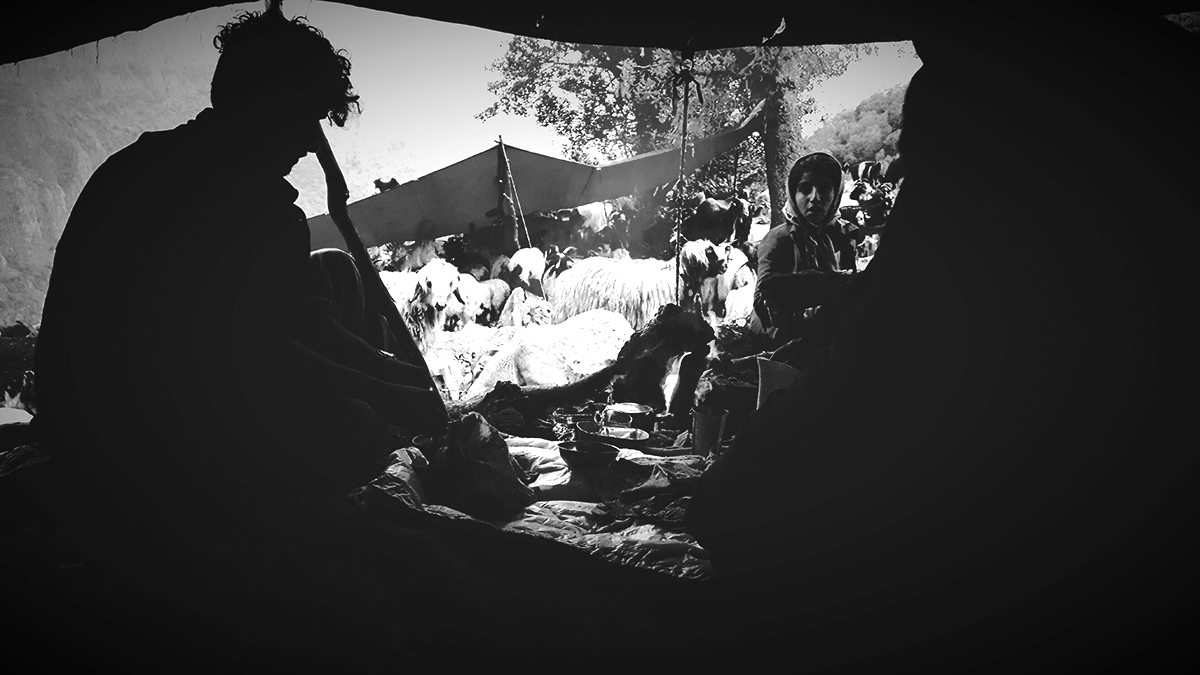
Women of a nomadic community are respected by all members, but they earned the respect through hard work and commitment. Usually they are the ones who set up the camp and pack for the migration. While the men leave the camp early with slower sheep, the women are left behind to pack the camp, and together with the mules and slightly faster goats set off to a place where the family will reunite once again. Overall, men have somewhat different duties: taking care of herding, protection and guarding the honor of the family. Nevertheless, during the migration times, the women also always carry rifles as a precaution.
Soon, the sun was again high up, and it was time for us to set forth once again. We walked most of the day across different valleys and slopes, following streams and roads, until we came to the place were the last market is placed. Before going over the river and deeper into the wilderness, here they will do some basic shopping. It was the last chance to buy what they’d need for following months, as after crossing Zardeh-Kuh (Yellow Mountain), they would only have themselves to rely on. The nomads did not buy anything unnecessary – they mostly bought some additional flour for their bread and some tobacco. After a little break and lunch on a meadow, we continued our trip over to the Bazoft river.
This is one of the rivers that has taken so many lives of nomads in the past. It is their only road to survival – yet, there was no bridge in sight! The nomads a special, rather stoic relationship with this mighty river. Back in the old days, it was impossible to cross it without improvised rafts. Luckily, in this very time of the year the water was pretty shallow, so we had no trouble crossing it. Still, it was the coldest water I had ever stepped into. While slowly following the herd, we were now on the other side, getting closer to the spot where we’d set up our next camp.
Approaching a nice valley, next to a stream, the family settled once again. Although tired, few of us did not want to miss the chance to explore a very beautiful surrounding. We also climbed a hill in order to get a better view of some fascinating mountains. One of these mountains was called “The Untouchable”, and it truly did look epic. It was an enormous and very steep barren rock, with a big cave high up in the middle. We were told that, in the past, whenever there was some kind of a turmoil, the rich men would put all of their gold and other possessions into these caves, hoping nobody would ever find them. Or maybe they hoped it would be guarded by Simorq (mythical bird in Persian literature, often equated with Phoenix). Legend or not, it has been recorded that many treasure hunters – some of which were Bakhtiyari – have lost their lives trying to climb Mt. Untouchable.
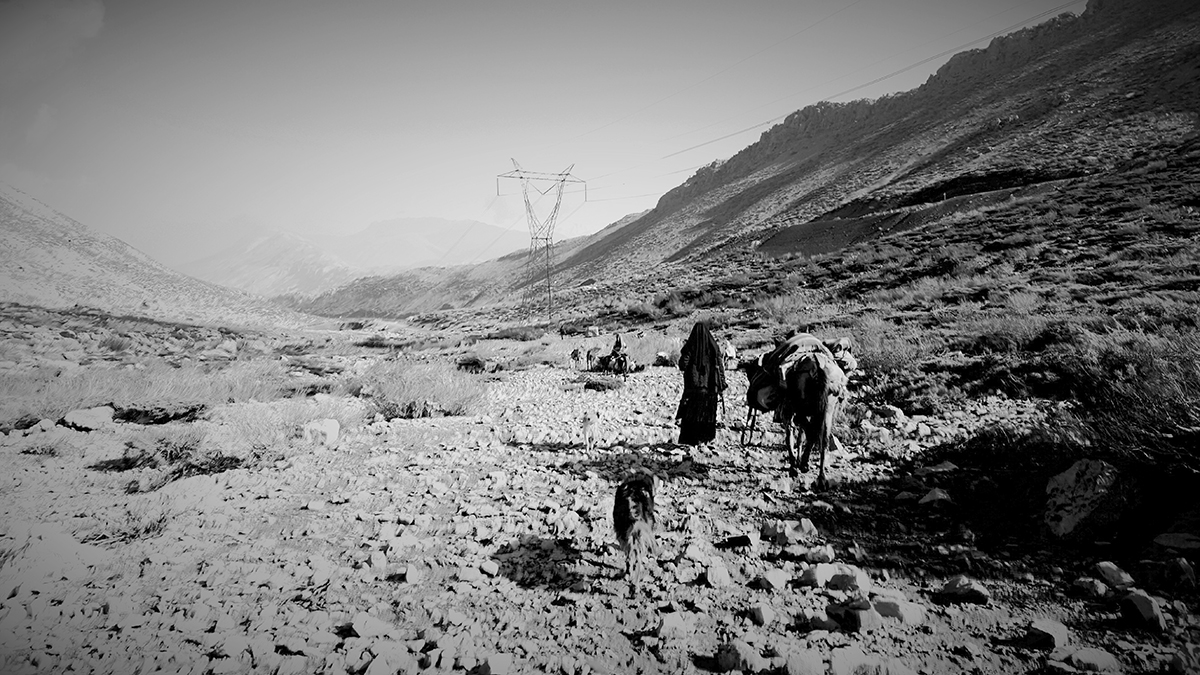
Close to the camp, we even discovered a small, but very old nomads’ graveyard. Such graveyards are scattered all around the nomadic region, along migration paths. If a great man dies, to represent the courageousness of the deceased, on top of his grave they would put a lion-shaped tombstone. You could often find swords and similar motifs engraved in the rocks – a universal highlanders’ custom, I guess, whether they were Celts, Bogomils or the Bakhtiyari. As we were on our fifth day of this extraordinary nomadic pilgrimage, almost reaching our physical limits, right after dinner we went to sleep under the sky.
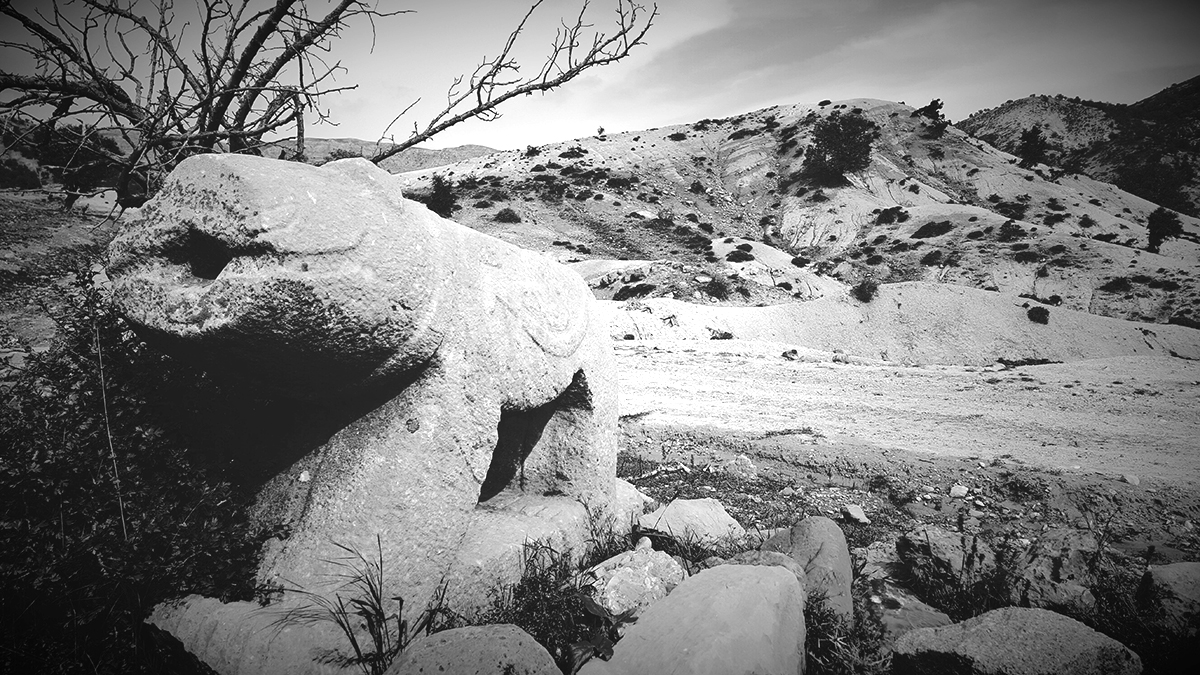
We slept next to each other, and while the nomads were guarding their sheep and goats, the moon was shedding light on our small camp. The night was peaceful and calm and you could only hear a few bells and running water from the stream next to us. Early in the morning, our host family quickly packed in order to continue on their way. Even though we wanted to say a proper goodbye, we didn’t want to slow them down, so we ended up with a short farewell:
- Ya Ali! Be salamat! Khoda Hafez!
Soon they disappeared behind the next hill, and only the smoke from the fireplace was left to slowly rise into the thin Zagros air. Tired and overwhelmed by this both crude and rewarding experience, after leaving a piece of us with the nomads, we still had to undertake a long trip back home.
***
This rather big family, as probably many others of the Bakhtiyari tribe, seems to be on a sort of a crossroads: whether to continue the old and hard life style, or to choose more comfortable life in the city. It is a good example of the situation that the Bakthiyari people – if not all nomads – are dealing with.
In case of Sa’adik, it is possible that he joined this migration mostly because of the fact that his nomadic parents struggled a lot in order to sponsor his studies. On the other hand, maybe Sa’adik represents a new generation of nomads: humble, educated and open to the world, but still with a strong urge to follow the paths of their ancestors.
Despite their struggles and temptations, the nomads will probably continue to do what they know best: They will be there, in the foothills of the mighty Zagros mountains, living in harmony with their livestock while the wind and rain continue to wash away the rocks of the ancient nomadic cradle.
Migration blues (trad. Bakhtiyari)
(translation by Mohammad Malekshahi)
I will die for the migration melody,
Until the bells chime in harmony
I will die for the calm night,
Before the rooster breaks it
I will die for the bread, made with love,
While I reach deeper into the night
I will die for the milk,
Given by every flower.
In Tehran, May 10th 2018

